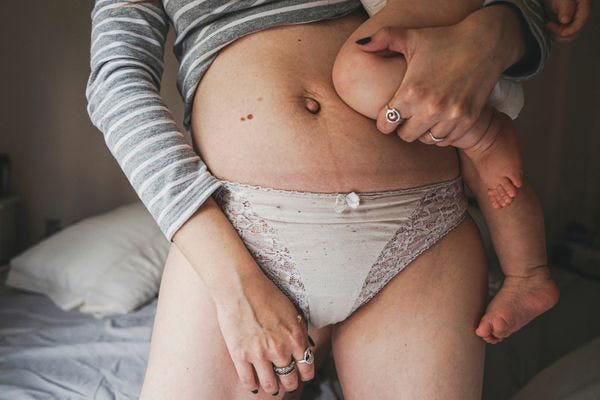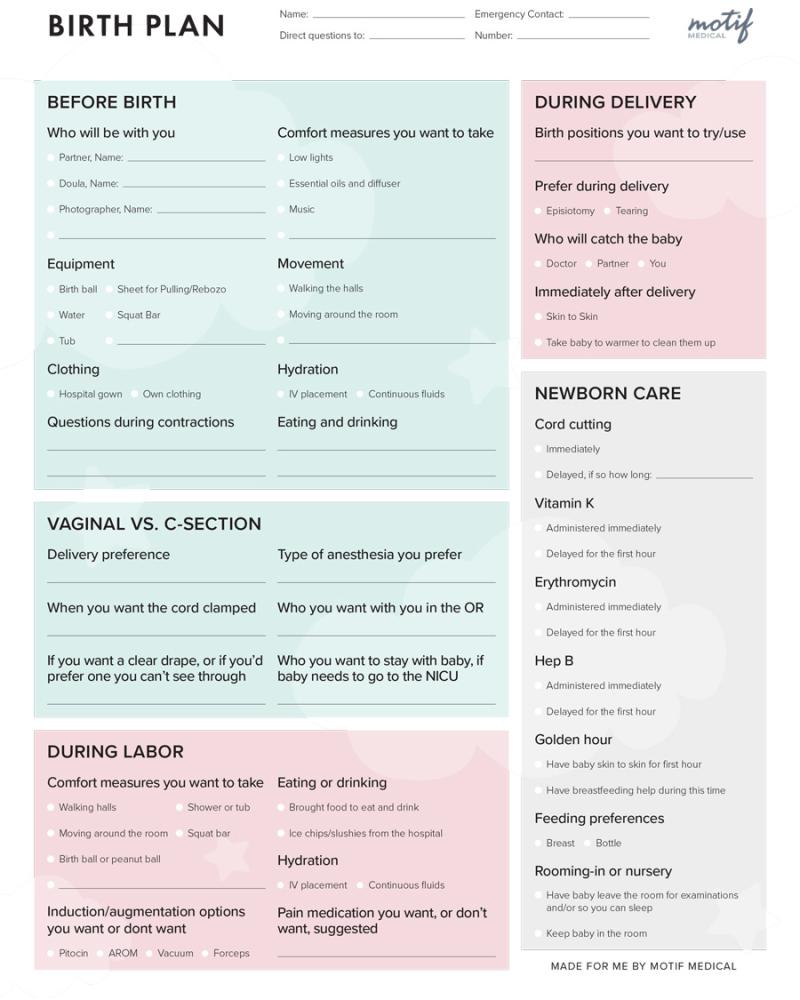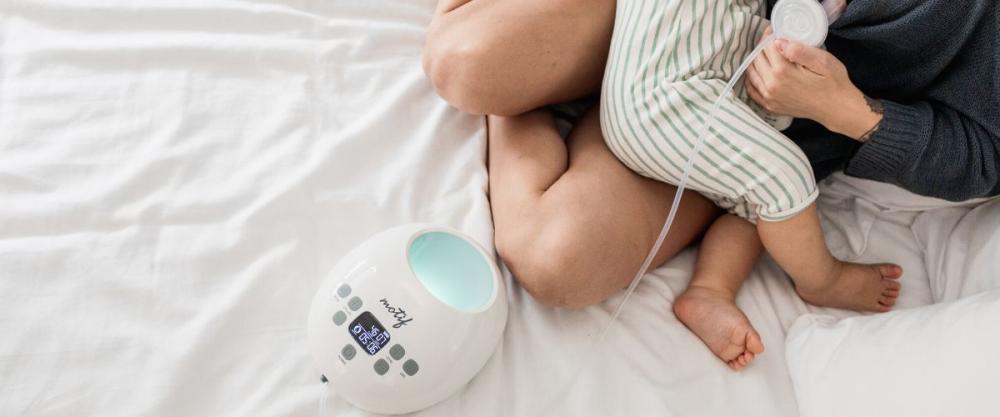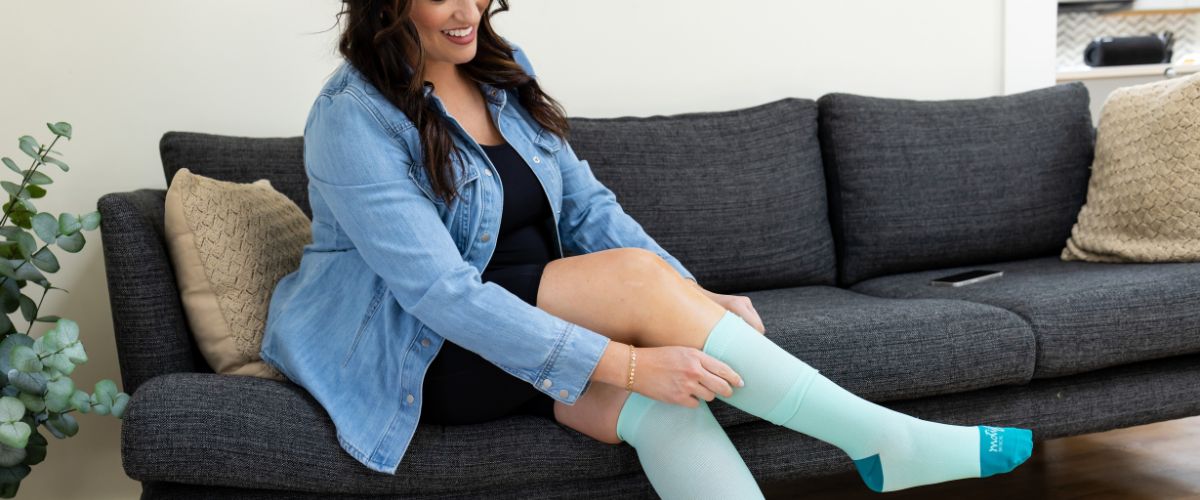When pregnant, one of the first decisions you'll have to make is who you'll see for your prenatal care. This is one of the most important choices you'll make because the provider you choose will also impact where you plan on giving birth to your baby. Most doctors or Ob/Gyns only deliver babies in the hospital. However, certified nurse-midwives (CNM) can attend births at birth centers, hospitals, or homes. Certified professional midwives (CPM) attend births at home and in birth centers.
Where Do You Want to Give Birth to Your Baby?
Recent years have brought an increase in families choosing to give birth outside of the hospital, with home birth rates rising about 20% in 2020. Even so, in the United States, only about 1.25% of women choose to give birth at home. Finding information on a home birth can be challenging. How is it different than at a birth center or a hospital? What do you need to have at your house? What will the midwife provide? Let's talk about those frequently asked questions.
Who Is a Candidate for a Home Birth, and What Does That Care Look Like?
Home birth is a safe option for healthy, low-risk pregnancies and those who desire an unmedicated, vaginal delivery. Families who plan to give birth at home receive regular prenatal, labor and delivery, and postpartum care provided by a doctor or a midwife.
Some benefits of home birth are fewer medical interventions during labor, such as analgesics for pain management, episiotomy, and cesarean deliveries, higher levels of maternal satisfaction, lower rates of perineal tears, and increased breastfeeding rates.


Women who choose to stay home for their birth like the freedom of movement and privacy they have at their house and the ability to create the environment they want for their birth experience. The midwifery model of care values hands-on care, informed decision-making and client autonomy.
Most home births are attended by a midwife, as they are the providers who have received specific training for out-of-hospital birth and are considered experts in normal, physiological birth.
Both first-time parents and people who have previously given birth can have home births. As long as you and your baby are healthy and don't have any medical concerns, it's safe to have your baby at home once you are full-term (37 weeks of pregnancy) and up to 2 weeks beyond your estimated due date. Your health care provider will do an ongoing assessment throughout your pregnancy to ensure that neither you nor your baby is high risk. If the need for a hospital transfer should arise, your health care provider will discuss their assessment with you.
Making a birth plan can feel uncomfortable because none of us want to think about unexpected things that could come up. But if those things happen, you'll want to have a plan for it. Plus, we've made it even easier —we have a birth plan template you can print out and place with your birth supplies.
Should I Make a Birth Plan if I Have a Home Birth?
YES! Everyone pregnant should make a birth plan. It is the best way to familiarize yourself with the options and choices that may come up during the birth process. If you're planning a home birth, I recommend making TWO birth plans—a home birth plan and a hospital birth plan. Your home birth plan will probably be simple, as most midwives practice intermittent fetal monitoring, observe the golden hour, help establish breastfeeding, and have low medical intervention and episiotomy rates.
In your hospital birth plan, you'll want to include your preferences on medical interventions (Pitocin, episiotomy, pain relief medications, forceps or vacuum delivery), as well as procedural preferences, like if you want to keep your placenta, if you want your baby to have delayed umbilical cord clamping, who you want to be with you if you have a c-section, who you want to go with baby if they need to transfer to another hospital or go to the NICU, etc.
Common Questions When Planning Your Home Birth
Do I Need to Hire a Doula?
You don't have to hire a doula if you have a home birth, but some birthing parents like having both a doula and a midwife present while they're in labor. A doula is there for physical, emotional, and informational support, while the midwife tracks labor progress and ensures you and the baby stay safe during labor and delivery. Your midwife or doctor is your medical provider. They are monitoring the well-being of both you and the baby and keeping an eye on the labor process to ensure a safe birth. These two birth attendants serve very different roles, and some families like having both resources available.
Can I Have a Water Birth?
You can! One of the benefits of having your baby at home is that you can labor and/or deliver in a birth pool if that's something that sounds appealing to you. Water is a beautiful tool to use during labor, and the birth pool has been referred to as "the midwife's epidural" because of the relief it brings when you get in. Even if you don't have a birth pool to use, you can labor in your bathtub or shower with all of your usual comforts and privacy.
How Do I Prepare My Home for Birth?
First, you'll want to gather a few things ahead of time to get your house ready for the big day. You'll need towels, washcloths, and a plastic sheet or liner to place on your bed. If your midwife isn't providing puppy pads/absorbent pads, you need to get some of those, too. If you plan to use a birth pool, grab a couple of flannel-backed tablecloths and place them plastic side down underneath the pool before you fill it. The plastic will protect your floors from getting wet, and the flannel will absorb any drips you get in and out of the tub.
If you're using your own birth pool, it's a good idea to do a practice run to make sure there aren't any holes, and so you have an idea of how long it takes for the tub to fill with water/how hot your water needs to be for it to be a good temperature. You may also want to purchase a birth ball or a peanut ball to use during labor. They are handy when trying to find comfortable labor positions!
My favorite home tip for anyone getting closer to labor is to write down birth affirmations and hang them all over your house. Let your heart and mind be filled with these positive statements so that when you're in the thick of labor, you can recall them as an encouragement to keep going. If you're laboring at home, this is especially effective because as you move around the rooms, you'll see the affirmations you now know by heart. You won't even have to read them for your mind to recall what they say and provide emotional encouragement throughout the birth process.
How do I prepare myself for a home birth?
Planning is no different from what anyone should do to prepare for birth—educate yourself! Read books, listen to podcasts, and read birth stories. Familiarize yourself with all the many ways that birth can go. Every birth is different! Even if this isn't your first baby, this delivery may not be like your previous one(s), so it's helpful to understand the wide variation of "normal" for birth and prepare yourself to go with the flow. Finally, be intentional about who you invite to be with you on your baby's birth day.
The feelings and emotions that your birth team, family members, and other people bring into the birth space can affect your feelings, affecting how labor progresses. Our bodies are designed to shut down the labor process if we feel unsafe or stressed, so make sure the people who will be with you are those who foster feelings of peace and safety.


Information provided in blogs should not be used as a substitute for medical care or consultation.
References
Bayrampour, H., Lisonkova, S., Tamana, S., Wines, J., Vedam, S., & Janssen, P. (2021). Perinatal outcomes of planned home birth after cesarean and planned hospital vaginal birth after cesarean at term gestation in British Columbia, Canada: A retrospective population-based cohort study. Birth, 48(3), 301-308. https://doi.org/10.1111/birt.12539
Gregory, E., Osterman, M., & Valenzuela, C. (2021). Changes in Home Births by Race and Hispanic Origin and State of Residence of Mother: United States, 2018–2019 and 2019–2020. National Vital Statistics Report, 70. https://doi.org/10.15620/cdc:110853
Hutton, E. K., Reitsma, A., Simioni, J., Brunton, G., & Kaufman, K. (2019). Perinatal or neonatal mortality among women who intend at the onset of labour to give birth at home compared to women of low obstetrical risk who intend to give birth in hospital: A systematic review and meta-analyses. EClinicalMedicine, 14, 59-70. https://doi.org/10.1016/j.eclinm.2019.07.005








